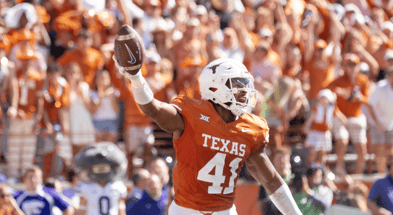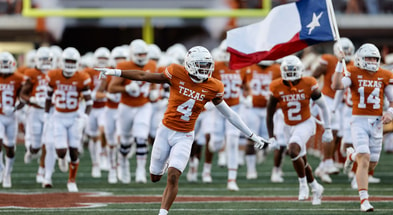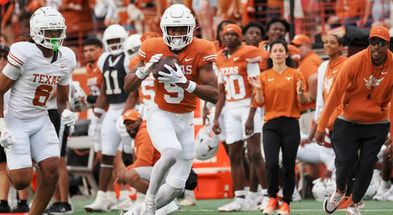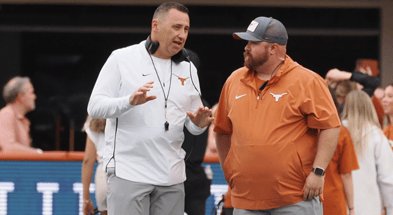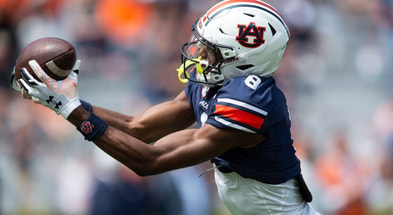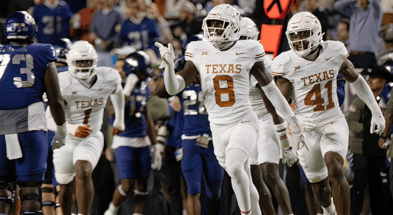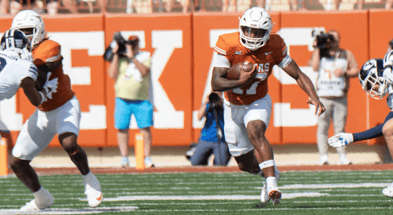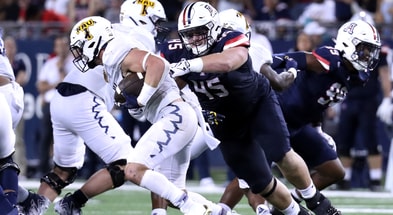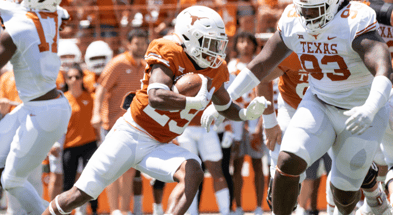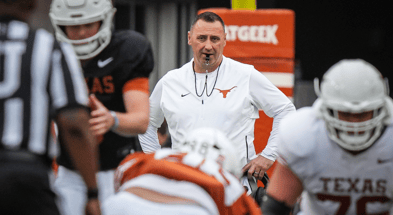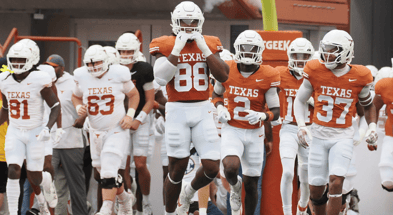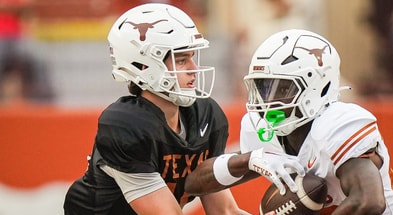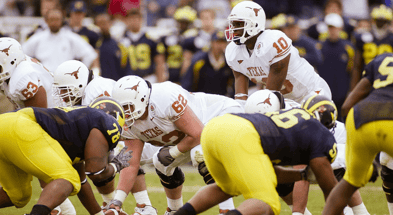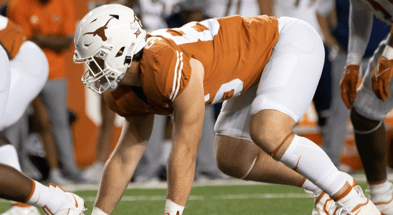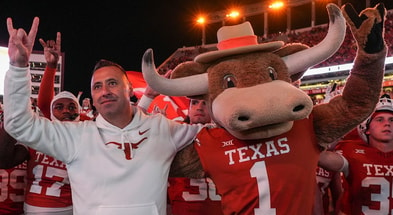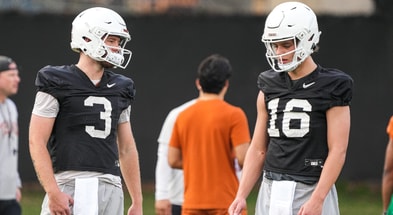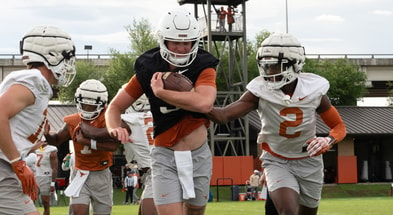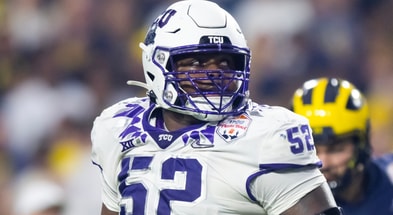How will teams attack the Texas defense?
Big 12 offenses had issues working out how to attack the Longhorn defense in 2022. Running the ball was a real chore for most of the league due to Texas’ rotation of great defensive tackles and the ways they shored up their defensive scheme, Edge positions, and linebacker room after a weak season in 2021.
[Get Inside Texas Plus for just $29.99 until 8/31/23!]
Throwing the ball was also challenging. In addition to developing the necessary cohesion to play good run defense, Texas upgraded three positions in the secondary with two moves. The first move was adding big cornerback Ryan Watts from Ohio State, the second was moving emerging star Jahdae Barron from cornerback to the “Star” position (nickel) which moved the former Star Anthony Cook back to field safety.
Opposing teams weren’t really sure where to even go with the ball. Only two teams were able to break 30 points on offense against the Horns: Texas Tech, who did so with their 6-of-8 day on 4th down, and Oklahoma State, who picked on a beaten up secondary missing multiple starters.
With starters back at every level of the defense in 2023, how will opposing offenses aim to attack the Longhorns? And what will Texas need to do in order to hold up?
No holes in coverage
One of the big strengths for Texas last year was that while they were still developing a mastery over their new match quarters coverages Gary Patterson helped install in the offseason, they were doing so from a true nickel package which didn’t give opponents any “easy outs” in the pass defense.
Opposing teams often worked to attack the linebackers inside, which drew diminishing returns as the Jaylan Ford and DeMarvion Overshown tandem gained confidence in the scheme and the safety help got better behind them.
For 2023 the situation is much more dire for opponents. In the secondary Watts and Barron are back at cornerback and Star, outside cornerback will be manned by either Terrance Brooks or Gavin Holmes, the latter of whom can play press-man coverage. Safety is likely to improve and either add man coverage ability or excellent zone awareness depending on whether converted corner Kitan Crawford or Arkansas transfer Jalen Catalon finds the starting lineup.
Linebacker may also be tougher to attack. Ford is back after picking off four passes and getting another year to nail down common route combinations. Overshown was a great athlete next to him but he never really mastered the nuances of zone coverage and instead was allowed to mostly play man on running backs in the flat. His likely replacement David Gbenda is very skilled in zone coverage, he knows how to get deep drops and has great change of direction quickness to carry and pick up routes coming over the middle.
Not only are there no easy outs, there aren’t even really places most teams would be particularly keen to attack. Many of the Texas defenders in the back seven are the sorts of players offenses would avoid if they played in other units. So what will they do with this Longhorn unit?
Run game and deep shot aggression
As counterintuitive as this may be to say about a team with big tackles, a potential All-American middle linebacker, and no dominant Edge rusher, I think opposing offenses are inevitably going to hope for a chance to pound at the Longhorn defensive fronts with the run game before taking deep shots on play-action. Because of Texas’ depth and quality in the defensive backfield, trying to drop back and attack a spread out Texas defense is simply not a winning formula.
However there could be opportunities in play-action. Texas’ base quarters coverage and the blitz package they’ll likely employ this season to boost their pass-rush are all schemes which will yield 1-on-1 shots and potentially big plays in the passing game.
There are considerable problems with trying to beat Texas with the ground game, but they’re safer and more efficient for opponents than attempting to beat tight coverage from two-high coverages with veteran ballhawks at safety. One obvious problem is the ability of those high safeties to arrive quickly from their two-high shells and limit the damage from any runs. Another problem is Texas’ still solid rotation of big defensive tackles who won’t be shoved off the ball easily. Then there’s the question of whether an offense can afford to run the ball, which will depend on how well their own defense holds up against Quinn Ewers and the Texas receiving corps.
Nevertheless, the easiest way to attack Texas will be on the ground. There are a few advantages opponents might be able to find.
The first is Texas’ boundary edge defense. While Ovie Oghoufo wasn’t a force at the Buck position a year ago, he had learned how to play the run effectively. Texas might be starting over there in 2023 with youngsters like Ethan Burke or possibly onetime defensive tackle prospect Kristopher Ross manning that edge. Next up, behind the Buck at Will is probably Gbenda and possibly converted safety Mo Blackwell or freshman Anthony Hill. None of those players have a reputation as fearsome run defenders who can’t be attacked or misdirected by a smart run game, at least not yet.
The Big 12 teams who are most likely to give the Texas defense trouble will be the ones who can avoid getting too far behind to abandon the run, can hammer the new Longhorn defenders up front with targeted calls, and can get on the board with big plays in the passing game.


